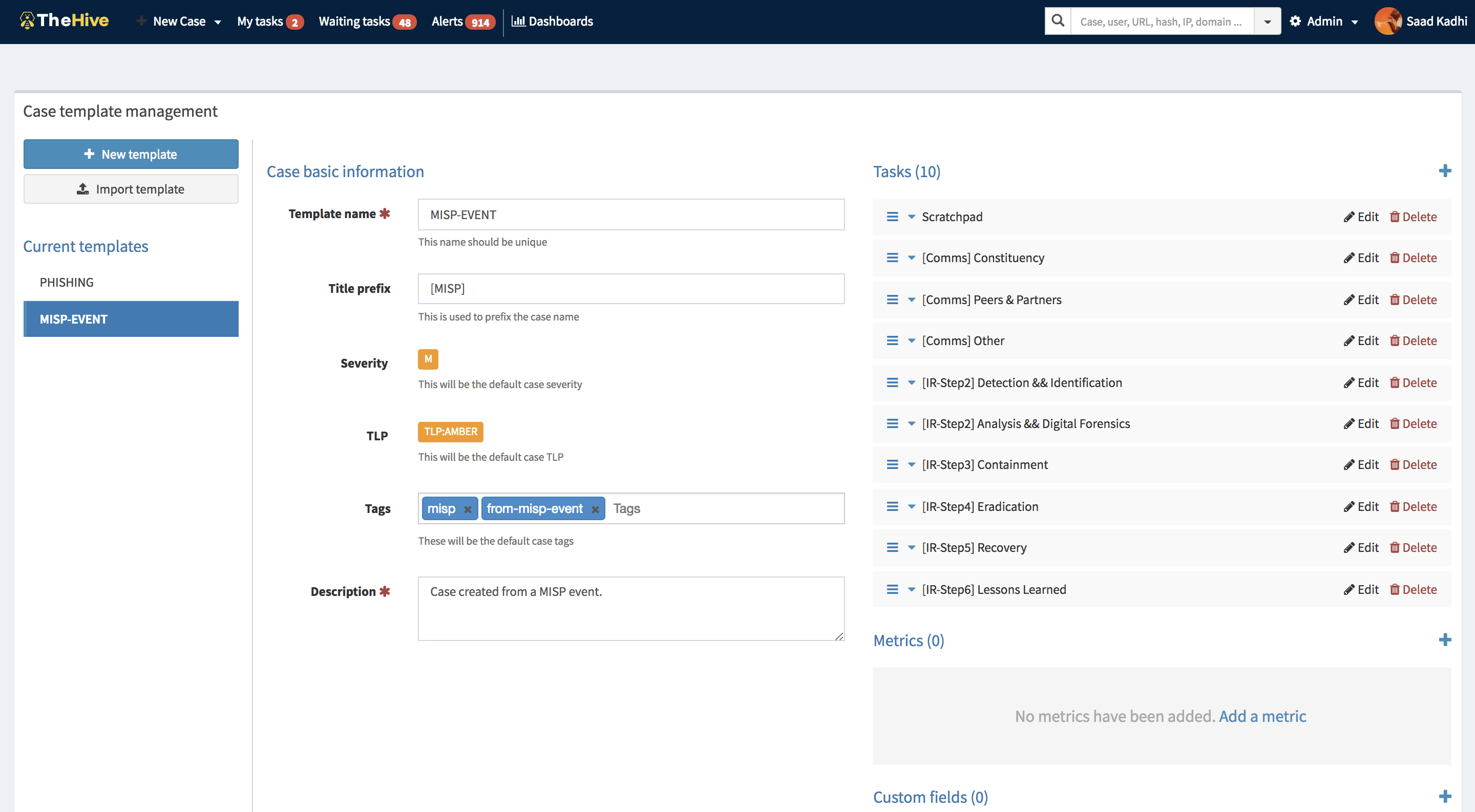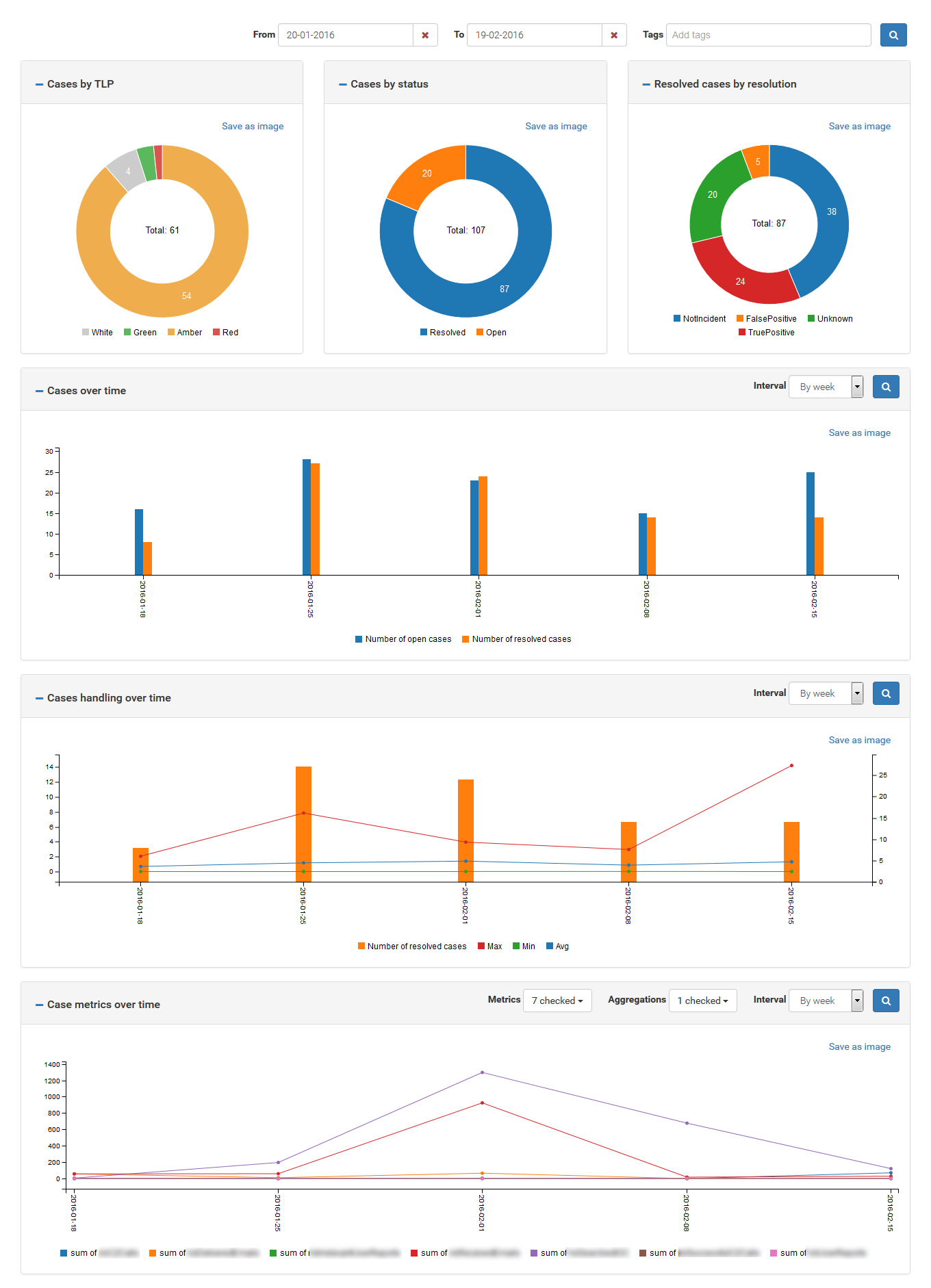Administrator's guide#
1. User management#
Users can be managed through the Administration > Users page. Only administrators may access it. Each user is identified by their login, full name and role.

Please note that you still need to create user accounts if you use LDAP or Active Directory authentication. This is necessary for TheHive to retrieve their role and authenticate them against the local database, LDAP and/or AD directories.
There are 4 roles currently:
- read : all non-sensitive data can be read. With this role, a user can't make any change. They can't add a case, task, log or observable. They also can't run analyzers;
- write: create, remove and change data of any type. This role is for standard users. write role inherits read rights;
- admin: this role is reserved for TheHive administrators. Users with this role can manage user accounts, metrics, create case templates and observable data types. admin inherits write rights;
- alert: users with this role can only create alerts.
Warning: Please note that user accounts cannot be removed once they have been created, otherwise audit logs will refer to an unknown user. However, unwanted or unused accounts can be locked.
2. Case template management#
Some cases may share the same structure (tags, tasks, description, metrics). Templates are here to automatically add tasks, description, metrics and custom fields while creating a new case. A user can choose to create an empty case or based on a registered template.
To create a template, as admin go into the administration menu, and open the "Case templates" item.

In this screen, you can add, remove or change template. A template contains: * default severity * default tags * title prefix (can be changed by user at case creation) * default TLP * default default * task list (title and description) * metrics * custom fields
Except for title prefix, task list and metrics, the user can change values defined in template.
3. Report template management#
When TheHive is connected to a Cortex server, observables can be analyzed to get additional information on them. Cortex outputs reports in JSON format. In order to make reports more readable, you can configure report templates. Report templates convert JSON in to HTML using the AngularJS template engine.
For each analyzer available in Cortex you can define two kinds of templates: short and long. A short report exposes synthetic information, shows in top of observable page. With short reports you can see a summary of all run analyzers. Long reports show detailed information only when the user selects the report. Raw data in JSON format is always available.
Report templates can be configured in the Admin > Report templates menu. We offer report templates for default Cortex analyzers. A package with all report templates can be downloaded at https://download.thehive-project.org/report-templates.zip and can be injected using the Import templates button.
4. Metrics management#
Metrics have been integrated to have relevant indicators about cases.
Metrics are numerical values associated to cases (for example, the number of impacted users). Each metric has a name, a title and a description, defined by an administrator. When a metric is added to a case, it can't be removed and must be filled. Metrics are used to monitor business indicators, thanks to graphs.
Metrics are defined globally. To create metrics, as admin go into the administration menu, and open the "Case metrics" item.

Metrics are used to create statistics ("Statistics" item in the user profile menu). They can be filtered on time interval, and case with specific tags.
For example you can show metrics of case with "malspam" tag on January 2016 :

For graphs based on time, the user can choose metrics to show. They are aggregated on interval of time (by day, week, month of year) using a function (sum, min or max).
Some metrics are predefined (in addition to those defined by administrator) like case handling duration (how much time the case had been open) and number of cases open or closed.